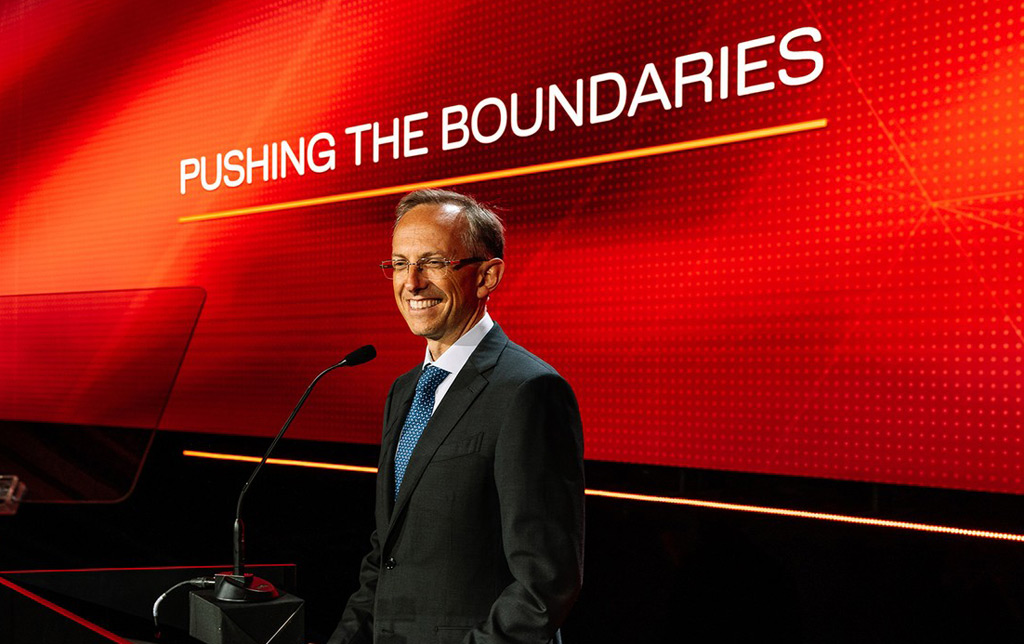Ferrari plans to complete construction next June of an additional plant at its Maranello headquarters to build its first electric vehicle, CEO Benedetto Vigna said on Monday during an investor conference organized by Bloomberg.
Referred to as the “e-building,” the plant will build future EVs from the brand, in addition to models containing internal-combustion engines, Vigna said. The plant will also build components for electrified vehicles, including motors, inverters, and batteries.
Though the plant will be ready next year, volume production of Ferrari's first EV isn't planned until 2026. The EV, thought to be an SUV, is only scheduled to debut in the fourth quarter of 2025, Vigna said.
In addition to EVs, Ferrari also plans more plug-in hybrid models in its quest to reduce emissions. Vigna in 2022 said Ferrari has a goal of becoming carbon neutral by 2030. Other specific targets he mentioned at that time included growing sales of electrified models to 60% by 2026 and 80% by 2030—with that 80% split evenly between EVs and hybrids.

Benedetto Vigna
As it does with its internal-combustion powertrains, Ferrari plans to develop its own electric motors, inverters, and batteries and will target industry-leading figures for weight and power density. The automaker will work with partners in some areas, though, particularly when it comes to advanced battery technology, like solid-state batteries, which Vigna has previously said Ferrari is exploring.
Ferrari is known to also be exploring the use of sound generators to make EVs more enticing. One of the biggest allures of a Ferrari is the sound of its engine, and the company clearly won't want to lose this trait when it rolls out EVs. Recent patents have shown Ferrari is looking at a system that works by measuring the resonance frequencies of key powertrain components like the motor and transmission, and then amplifying this to deliver a somewhat authentic sound.
Ferrari in 2022 earmarked approximately $4.6 billion to fund all of these undertakings, with most of the funds to be spent on product development.
